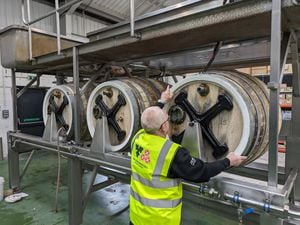Urgent action needed to tackle housing emergency
A report from leading planning consultancy Lichfields raises major issues not just for the growing housing emergency and the Government’s target of building 300,000 new homes per year by the mid 2020s, but also in terms of ‘levelling up’ both geographically and the generational divide.
Urgent action is now needed to boost the number of developments of new homes if the Government wants to tackle the housing emergency, according to the Land Promoters and Developers Federation.
The shortage of new homes is contributing to soaring house prices, leaving many young people caught in the ‘generational divide’ and unable to afford to buy their first home, says the LPDF.
One of the key causes of the housing shortage is the dwindling pipeline of planning consents for building plots. These must increase rapidly if the Government wants to meet its target of 300,000 new homes each year, it says.
The LPDF also believes the unprecedented housing emergency is having a major negative impact on the lives and mental health of millions of people as house prices and rents continue to soar.
Statistics highlight the impact on the lives of people who cannot afford to get on to the property ladder, those who live in overcrowded or dangerous homes, and those paying ever-increasing levels of rent. The LPDF says the housing crisis is getting worse despite the government’s desire to see 300,000 new homes built each year.
In 2019-2020 the average age of a first-time buyer was 34 – in 2007 the average age was 27.
This month the average house price in the UK has exceeded £250,000. Saving £311 per month, it would take 10 years to save for a 15 per cent deposit, but while saving for that deposit, the average house price will have increased by £69,000, or 38 per cent.
In 2020, the average cost of buying a home was 7.84 times the average income – in 1997 it was 3.54 times.
Lichfields was commissioned by the LPDF and the Home Builders Federation to undertake research into the planning and development process and in particular the pipeline of sites for housing development.
The report – Feeding the pipeline: Assessing how many permissions are needed for housebuilders – is the third of three linked research studies exploring the current housing crisis.
It looks at how many additional implementable planning permissions on sites are needed to achieve ambitions of delivering 300,000 net additional homes per annum across England from the current base of 243,770 net additional homes achieved in 2019-2020. It also explores the practices within the 10 major housebuilding companies to show how important the continuing pipeline is to deliver sufficient homes to satisfy peoples’ needs and demands.
LPDF chairman Paul Brocklehurst said: “Currently it is the south-east of England and the hot-spots where prices are disproportionately high, it is young people who are finding it most difficult to cope in the housing market and it is the growing shortfall in affordable housing which is having the greatest impact on those most disadvantaged members of society.
“Contrary to the message often conveyed by local authority representatives, there is not a major surplus of planning permissions compared to the actual number of homes being built. The imbalance is explained by the length of the development pipeline caused in part by shortages of local government staffing and resources.”
Andrew Whitaker, planning director at the HBF said. “If we are to get back to pre-pandemic housing supply levels, which were still well short of the Government’s target of 300,000, major improvements to the planning process will be needed.
“Building enough homes to match demand requires sufficient sites to be allocated applications to be processed efficiently to the point where construction can start. Far too many sites are stuck in the treacle of the planning process, delaying work starting, driving up costs and preventing desperately needed homes being delivered.”





